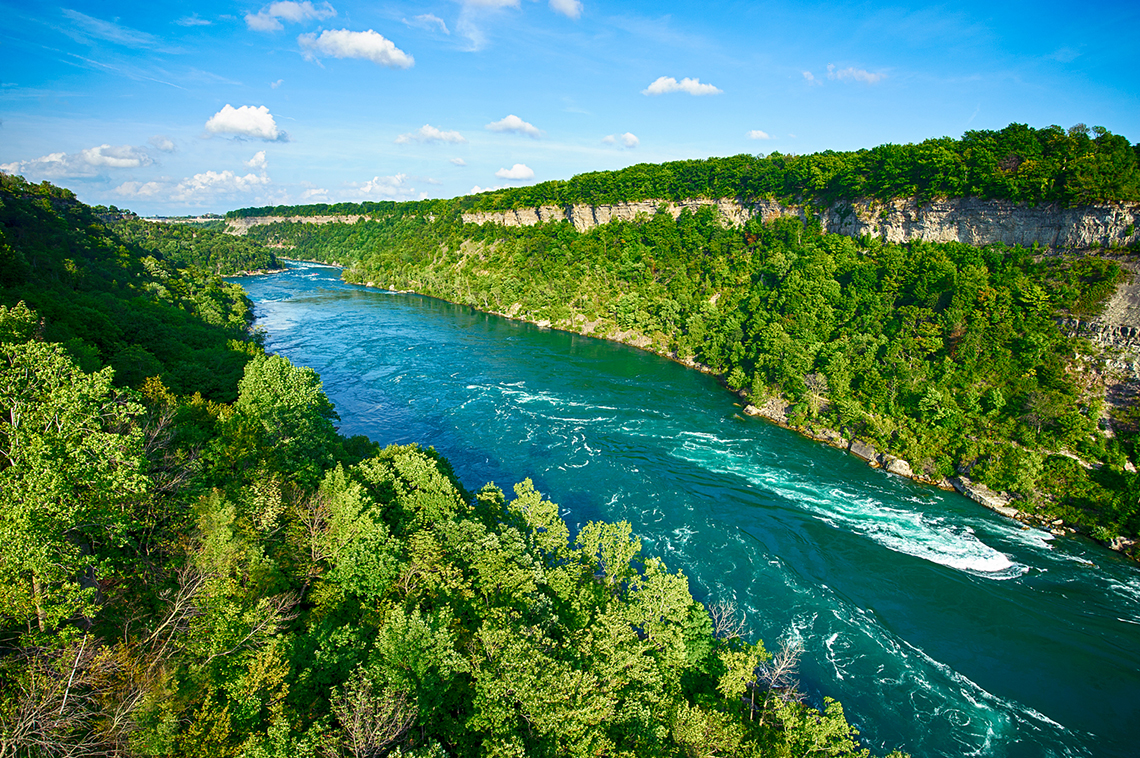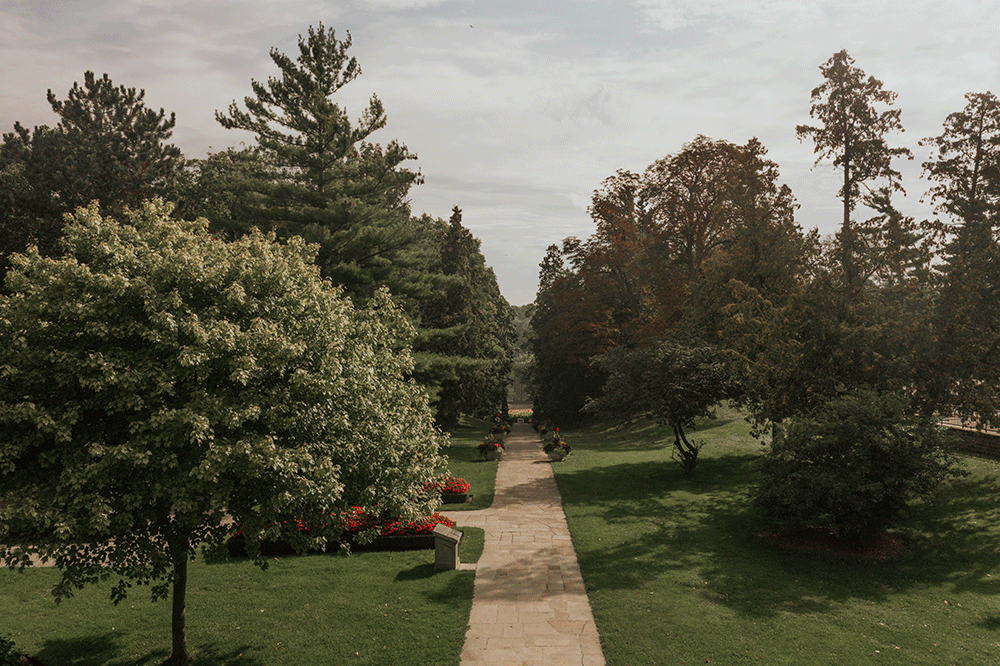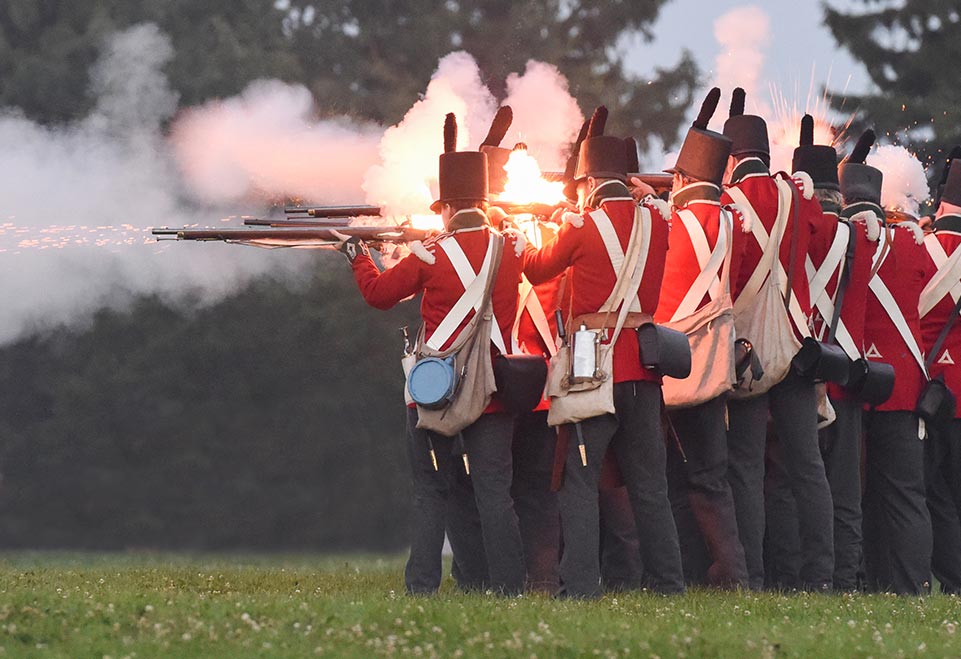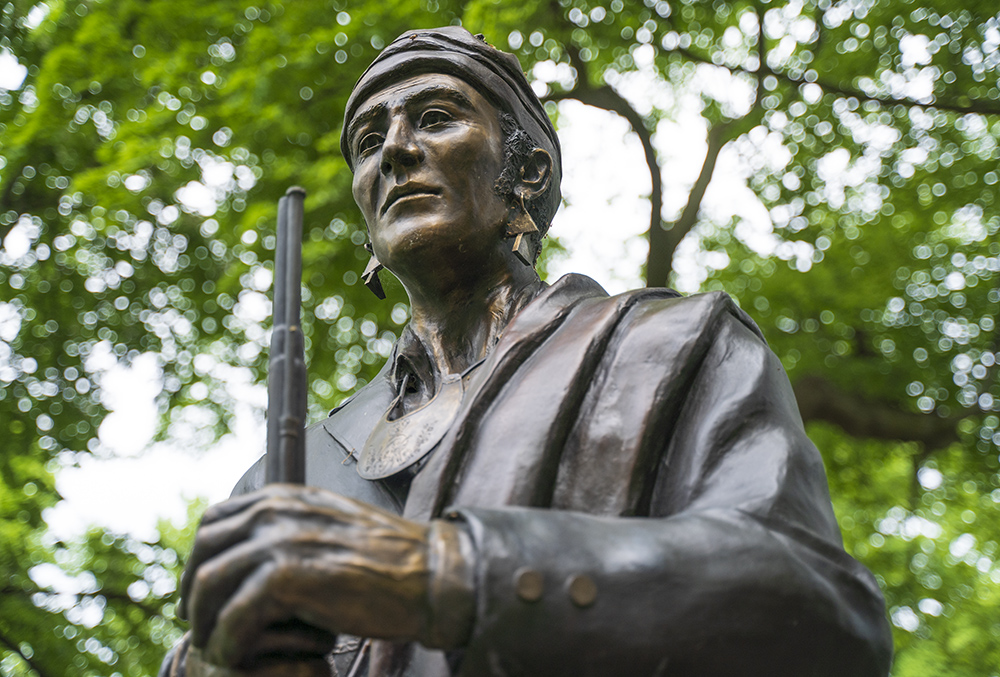Landscape of Nations Memorial
 Add to Itinerary
Add to Itinerary
Located in Queenston Heights Park, the Landscape of Nations Memorial is dedicated to the Haudenosaunee (Six Nations) Confederacy and Indigenous allies that participated in the War of 1812. The Landscape of Nations Memorial affirms the proper place of First Nations peoples at the core of Canadian history and signals their ongoing role in contemporary life and national affairs.
The memorial also recognizes the historic ceremony of peace and reconciliation held in Niagara on August 31 and September 1, 1815, that restored peace among the First Nations who fought on opposing sides during the war.
- Year-Round
- Self-guided Experience
- Accessible
Indigenous Connections Along the Niagara Parkway
The land along the Niagara River has been recognized as a spiritual place with rich ties to Indigenous history and culture for many generations. Oral tradition and archaeological evidence indicate that Indigenous peoples have lived along the Niagara River, from Fort Erie north to the shores of Lake Ontario in Niagara-on-the-Lake, for more than 13,000 years. Use our interactive map to discover these Indigenous connections along the Niagara Parkway.


Battle of Queenston Heights
The Battle of Queenston Heights was the first major battle of the War of 1812. It was during this battle that Indigenous allies pinned down an overwhelming force of the American army, allowing the British to counterattack and regain the Heights. This significant battle was responsible for the death of Major-General Sir Isaac Brock along with his Canadian aide-de-camp, Lieutenant Colonel John MacDonell.
Indigenous allies turned the tide of this battle and many more during the War of 1812.
War of 1812
Loyalists and Haudenosaunee (Six Nations) came to Ontario in significant numbers during the 1780s, following the American Revolutionary War.
During the War of 1812, First Nation allies helped the heavily outnumbered defenders of Upper Canada stand against the overwhelming American forces. Their efforts helped secure victory at pivotal events throughout the War of 1812 and secured freedom for all Canadians. In turn, the Haudenosaunee were offered a safe haven in Ontario when they were displaced from their ancestral homelands.


Honouring Indigenous Leaders
John Norton
Major John Norton (Teyoninhokarawen) was adopted into the Mohawk Nation by Joseph Brant. He led Six Nations fighters into battles at Queenston Heights, Stoney Creek and Chippawa. His journal chronicles his 1,000 mile journey from Upper Canada to the homelands of his Cherokee father, stories of Haudenosaunee culture and history, and Haudenosaunee involvement in the War of 1812.
John Brant (Ahyouwa’ehs) was the son of Joseph Brant.
Along with John Norton, he led warriors at the Battle of Queenston Heights along with other engagements. He was a strong advocate for building schools, appointed resident superintendent for the Six Nations of the Grand River and was elected to the Legislative Assembly of Upper Canada for Haldimand. He was also appointed traditional chief, Tekarihoga by his mother.

 Close and
Close and